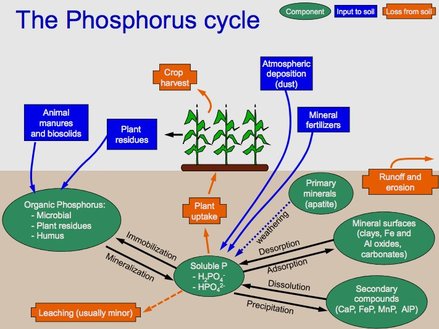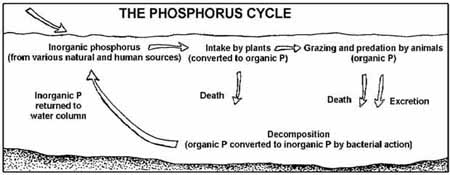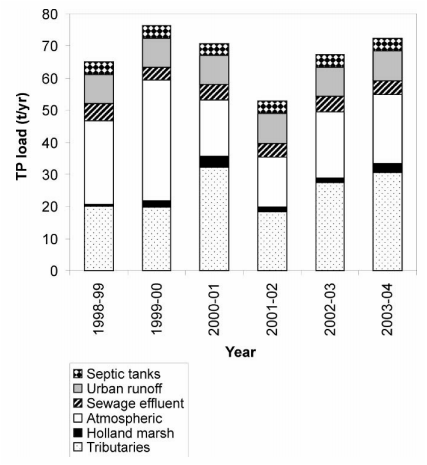While a useful nutrient for growing terrestrial plants, phosphorus is also the limiting nutrient in aquatic ecosystems. An increased concentration supports a larger population of algae which can cause problems for other organisms. When the algae die off, the oxygen that is used during the decomposition is no longer available for plants, fish, or animals.
- MSU Extension Service. (2014, August 21). Why is my young corn stunted and purple?. In Corn in Mississippi. Retrieved from http://msucares.com/crops/corn/corn_stunted.html
- Plant and Soil Sciences eLibrary. (2014). Importance of Phosphorus to Plants. In Soils - Part 6: Phosphorus and Potassium in the Soil. Retrieved from http://passel.unl.edu/pages/informationmodule.php?idinformationmodule=1130447043&topicorder=2&maxto=15&minto=1
- Rehm, G., Schmitt, M., Lamb, J., Randall, G., & Busman, L. (2002). Understanding phosphorus fertilizers. In University of Minnesota Extension. Retrieved October 9, 2014, from http://www.extension.umn.edu/agriculture/nutrient-management/phosphorus/understanding-phosphorus-fertilizers/
- Winter, J. G., Eimers, M. C., Dillon, P. J., Scott, L. D., Scheider, W. A., & Willox, C. C. (2007). Phosphorus inputs to Lake Simcoe from 1990 to 2003: Declines in tributary loads and observations on lake water quality. Journal of Great Lakes Research, 3(2), 381-396.



 RSS Feed
RSS Feed
